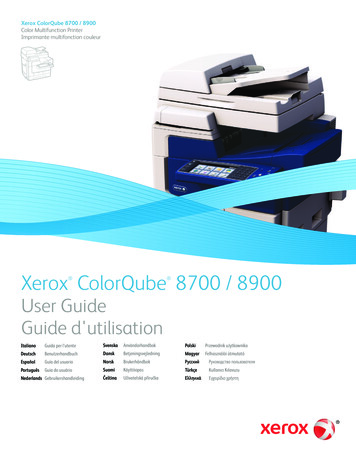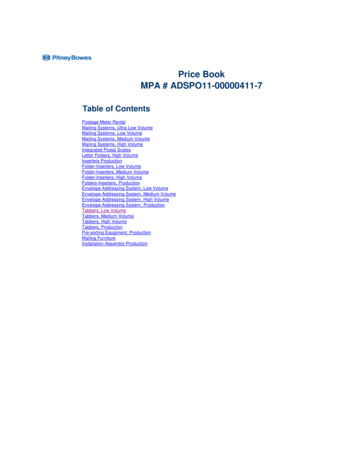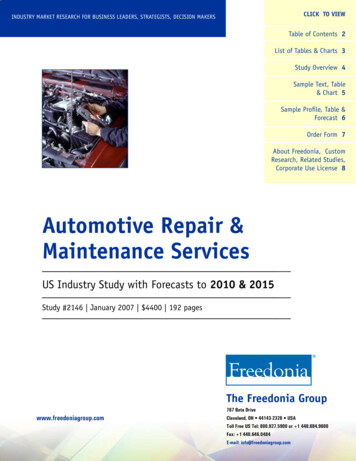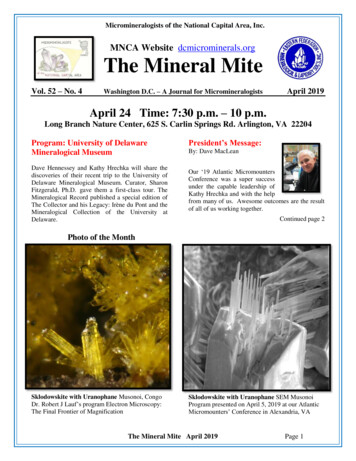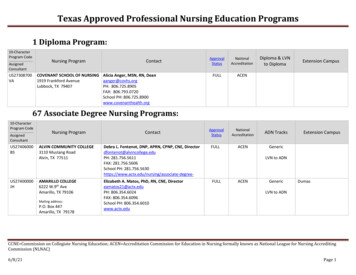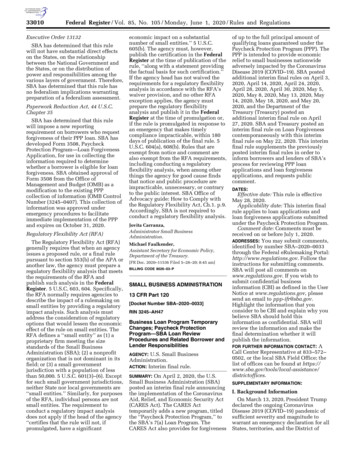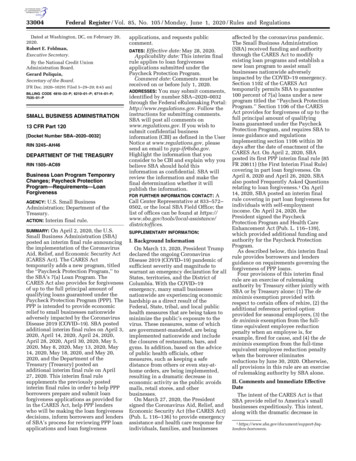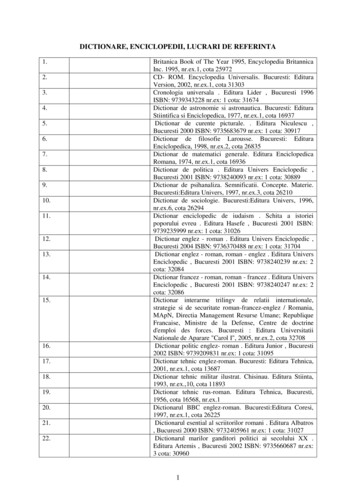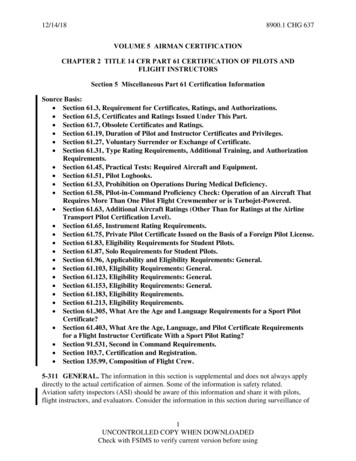
Transcription
12/14/188900.1 CHG 637VOLUME 5 AIRMAN CERTIFICATIONCHAPTER 2 TITLE 14 CFR PART 61 CERTIFICATION OF PILOTS ANDFLIGHT INSTRUCTORSSection 5 Miscellaneous Part 61 Certification InformationSource Basis: Section 61.3, Requirement for Certificates, Ratings, and Authorizations. Section 61.5, Certificates and Ratings Issued Under This Part. Section 61.7, Obsolete Certificates and Ratings. Section 61.19, Duration of Pilot and Instructor Certificates and Privileges. Section 61.27, Voluntary Surrender or Exchange of Certificate. Section 61.31, Type Rating Requirements, Additional Training, and AuthorizationRequirements. Section 61.45, Practical Tests: Required Aircraft and Equipment. Section 61.51, Pilot Logbooks. Section 61.53, Prohibition on Operations During Medical Deficiency. Section 61.58, Pilot-in-Command Proficiency Check: Operation of an Aircraft ThatRequires More Than One Pilot Flight Crewmember or is Turbojet-Powered. Section 61.63, Additional Aircraft Ratings (Other Than for Ratings at the AirlineTransport Pilot Certification Level). Section 61.65, Instrument Rating Requirements. Section 61.75, Private Pilot Certificate Issued on the Basis of a Foreign Pilot License. Section 61.83, Eligibility Requirements for Student Pilots. Section 61.87, Solo Requirements for Student Pilots. Section 61.96, Applicability and Eligibility Requirements: General. Section 61.103, Eligibility Requirements: General. Section 61.123, Eligibility Requirements: General. Section 61.153, Eligibility Requirements: General. Section 61.183, Eligibility Requirements. Section 61.213, Eligibility Requirements. Section 61.305, What Are the Age and Language Requirements for a Sport PilotCertificate? Section 61.403, What Are the Age, Language, and Pilot Certificate Requirementsfor a Flight Instructor Certificate With a Sport Pilot Rating? Section 91.531, Second in Command Requirements. Section 103.7, Certification and Registration. Section 135.99, Composition of Flight Crew.5-311 GENERAL. The information in this section is supplemental and does not always applydirectly to the actual certification of airmen. Some of the information is safety related.Aviation safety inspectors (ASI) should be aware of this information and share it with pilots,flight instructors, and evaluators. Consider the information in this section during surveillance of1UNCONTROLLED COPY WHEN DOWNLOADEDCheck with FSIMS to verify current version before using
12/14/188900.1 CHG 637applicants, certificate holders, and evaluators. For reference, topics covered in this sectioninclude: Use of a flight simulation training device (FSTD) to conduct a part 61, § 61.58pilot-in-command (PIC) proficiency check;Using an FSTD or aircraft for a practical test and § 61.45 practical test aircraftrequirements;English language standards for pilots and applicants;Operating limitations for hearing- or speech-impaired applicants and instructors;Pilot certificate requirements and the logging of flight time in hang gliders,ultralights, powered (motorized) gliders, and other vehicles;Pilot type rating requirements in aircraft certificated under Special Federal AviationRegulation (SFAR) 41;Training and testing in SFAR 41 airplanes for pilots with a “SECOND-INCOMMAND REQUIRED” limitation on their type rating;Amendment and replacement of valid pilot certificates, including lighter-than-air;Voluntary surrender of a certificate or rating;Reporting a deceased airman;Lost logbooks or flight records;Authentication of old and new airman certificates to identify forgeries orcounterfeits; andRemoval of the § 61.64(f)(2) Supervised Operating Experience (SOE) limitation froman aircraft type rating on a pilot certificate.NOTE: See Volume 5, Chapter 2, Section 22 for information relating to typeratings limited to second-in-command (SIC) privileges.5-312 USE OF AN FSTD APPROVED TO CONDUCT § 61.58 PIC PROFICIENCYCHECKS. Section 61.58 specifies requirements for pilots serving as PICs of aircraft certificatedfor more than one pilot or that are turbojet-powered. The PIC must have completed a proficiencycheck in the particular type aircraft since the beginning of the 24th calendar-month before themonth in which the pilot acts as PIC. Within the preceding 12 calendar-months the PIC musthave completed a PIC proficiency check in an aircraft that is type certificated (TC) for more thanone required pilot crewmember or is turbojet-powered. The PIC proficiency checks of § 61.58may be performed in an FSTD in accordance with the applicable provisions set forthin § 61.58(g). See Volume 5, Chapter 2, Section 20, Conduct of Pilot-in-Command ProficiencyChecks for Aircraft Requiring More Than One Pilot or Turbojet-Powered as Required bySection 61.58, for additional information.5-313 USE OF AN FSTD OR AIRCRAFT IN ACCORDANCE WITH § 61.45. Applicantsare permitted to use an approved FSTD during the practical test. If not accomplishing the entireflight increment of a practical test in an FSTD, however, applicants must furnish an aircraft thathas equipment for areas of operation required for the practical test and without prescribedoperating limitations that prohibit its use in any of the areas of operation required for thepractical test. Placement of appropriate and available operating limitations on the applicant’sTemporary Airman Certificate (FAA Form 8060-4) or rating, however, may allow use of an2UNCONTROLLED COPY WHEN DOWNLOADEDCheck with FSIMS to verify current version before using
12/14/188900.1 CHG 637aircraft with operating characteristics that preclude the applicant from performing certainrequired tasks for the practical test.5-314 ENGLISH LANGUAGE REQUIREMENTS FOR PILOT CERTIFICATION.A. The International Civil Aviation Organization (ICAO) Language Standard.There is no Federal Aviation Administration (FAA) regulatory requirement for pilots operatingU.S.-registered aircraft within the United States to have an English proficiency endorsement ontheir FAA pilot certificates. While the language proficiency endorsement on an FAA certificateis an ICAO standard, evaluators apply long-standing FAA requirements for English proficiencywhen determining eligibility for an FAA pilot certificate. The current rules in 14 CFR parts 61and 107 require that the applicant be able to read, speak, write, and understand the Englishlanguage. As a member of ICAO, the United States has English proficiency standards that meetICAO Level 4 language proficiency requirements. In order to be eligible for and continue to holda part 61 certificate, an individual needs to be able to demonstrate at least this level of Englishlanguage proficiency unless there is a medical reason for the deficiency, as referenced inparagraph 5-315.B. The FAA Aviation English Language Standard (AELS). As happens with requiredskills, pilots and instructors sometimes lose language proficiency over time or through lack ofuse. Therefore, during certification tests, flight reviews, proficiency checks, and theFAA-sponsored Pilot Proficiency Program (WINGS), and in the daily course of businessconduct, the responsible evaluator or instructor verifies the English competency of theapplicant—even if the applicant is a longstanding FAA certificate holder. Evaluators andinstructors determine whether the applicant can read, speak, write, and understand the Englishlanguage, using the FAA AELS as their benchmark. Intervention by an ASI is required wheneverthere is a question about the applicant’s ability to meet the AELS. Instructors, evaluators, andASIs must follow the current policies and procedures in Volume 5, Chapter 14, Section 1 and theguidance in Advisory Circular (AC) 60-28, FAA English Language Standard for an FAACertificate Issued Under 14 CFR Parts 61, 63, 65, and 107, to resolve issues that relate to Englishlanguage competency not associated with a medical condition.C. Requirements During Application Processing.1) When acting as a certifying official during an in-person appointment with anapplicant, all certifying officials must require positive personal identification from the applicantunder the regulations as specified in § 61.3.2) With one exception, an ASI/aviation safety technician (AST) must not acceptapplications directly from an applicant for a pilot certificate through the mail. See Volume 5,Chapter 2, Section 11 regarding procedures for processing a flight instructor certificate renewalvia U.S. mail.3) ASIs and ASTs routinely receive previously verified and signed paperapplications submitted to the responsible Flight Standards District Office (FSDO) from othercertifying officials. ASIs and ASTs review and sign off on these applications and forward them3UNCONTROLLED COPY WHEN DOWNLOADEDCheck with FSIMS to verify current version before using
12/14/188900.1 CHG 637to the Office of Foundational Business, Civil Aviation Registry Division, Airmen CertificationBranch, without meeting the applicant in person at the FSDO.4) Applying for a part 61 certificate is official business with the FAA that requiresa language verification by the evaluator and issuance of the Pilot’s Bill of Rights (PBR) to theapplicant. The paper FAA Form 8710-1, Airman Certificate and/or Rating Application, and theIntegrated Airman Certification and Rating Application (IACRA) process require that theevaluator verify the status of the applicant’s English language skill at the time of application.D. Information to Disseminate. ASIs should share the following information duringcontacts with flight and ground instructors, other evaluators, approved schools, and the aviationcommunity:“Certifying officials must meet applicants in person and require positive personalidentification from each applicant for a part 61 certificate under the regulations asspecified in § 61.3. If the holder of an FAA pilot certificate without an Englishlanguage operating limitation cannot demonstrate compliance with the FAAAELS, evaluators must follow the procedures detailed in Volume 5, Chapter 14,Section 1, and in AC 60-28 (as amended).”5-315 OPERATING LIMITATIONS FOR HEARING- AND/OR SPEECH-IMPAIREDAPPLICANTS.A. Part 61 Specifications. If an applicant is unable to meet English languagerequirements due to a medical condition, the regulations in part 61 allow the Administrator toissue the applicant’s pilot certificate with operating limitations as are necessary for the safeoperation of the aircraft. Persons who are unable to meet the requirement because of a hearing orspeech impairment must have the medical reason substantiated through a letter from a licensedphysician with appropriate letterhead. This letter is sufficient to allow an ASI or AST to proceedwith the certification process subject to any special medical test requirements. See Volume 5,Chapter 8, Section 1 for special medical flight test information. A special medical flight test maybe used, for example, to allow a pilot to demonstrate the ability to hear and speak the Englishlanguage. These tests may allow an ASI/AST to remove limitations on an applicant’s pilotcertificate and provide FAA medical personnel with the test results needed to make adjustmentson the pilot’s medical certificate, as applicable.B. Operating Limitations on Pilot and Medical Certificates. This paragraph specifiesthe exact operating limitations placed by an ASI or AST on the pilot certificates of persons whoare hearing and/or speech impaired due to medical reasons. Other evaluators may not add theselimitations, although they may reissue them without change when authorized to reissuea certificate or give a practical test. Note that no ASI, AST or other evaluator may add or removea limitation from any FAA medical certificate.C. Operating Limitations on Persons with a Hearing or Speech Impairment.The ASI or AST must apply all the following three limitations for hearing- and/orspeech-impaired applicants:4UNCONTROLLED COPY WHEN DOWNLOADEDCheck with FSIMS to verify current version before using
12/14/188900.1 CHG 637 “NOT VALID FOR FLIGHTS WHICH REQUIRE THE USE OF ENGLISH.”“MAY NOT SERVE AS A REQUIRED PILOT CREWMEMBER IN ANAIRCRAFT THAT REQUIRES MORE THAN ONE PILOT CREWMEMBERBY THE AIRCRAFT TYPE CERTIFICATE OR BY REGULATION, NORSERVE AS A SAFETY PILOT FOR THE PURPOSE OF § 91.109(c).”“NOT VALID FOR FLIGHTS OUTSIDE THE UNITED STATES.”1) A person who is hearing- and/or speech-impaired may not serve as a PIC or asa required pilot crewmember for any flights requiring the use of a radio for verbalcommunication. For flights requiring radio use, an appropriately qualified pilot must act as the14 CFR part 1, § 1.1 PIC for the flight. That PIC must meet all the part 61 pilot certification,medical certification, and recency-of-experience requirements. The PIC and any other requiredpilot crewmember must not be hearing or speech impaired. The PIC:a) Has final authority and responsibility for the operation and safety of the flight;b) Has been designated as PIC before or during the flight; andc) Holds the appropriate category, class, and type rating, if appropriate, for theconduct of the flight.2) A pilot with a hearing or speech impairment may act as PIC at a towered domesticairport in Class D Airspace, for example, only when one pilot is required, the flight isprearranged with air traffic control (ATC), ATC agrees to allow the flight, and the pilot is able toaccept clearances and instructions using light signals or other acceptable means ofcommunication.D. Flight Instructors With a Hearing or Speech Impairment. Per § 61.183(b), anapplicant for a flight instructor certificate must be able to read, speak, write, and understand theEnglish language.1) Persons who are unable to meet these requirements of § 61.183(b) because ofa hearing and/or speech impairment due to medical reasons must have an operating limitationplaced on their flight instructor certificate. The Federal Air Surgeon, an authorized FAA medicalrepresentative, or a designated Aviation Medical Examiner (AME) will confirm and documentthe medical condition on the person’s application for medical certification, if applicable.2) Although an applicant who the ASI has determined to be hearing or speechimpaired may take a practical test for a flight instructor certificate, the ASI must place thefollowing limitation on the flight instructor certificate: “MAY NOT SERVE AS A FLIGHT INSTRUCTOR IN FLIGHT.”3) However, a person who is hearing and/or speech impaired may be able to serve asa flight instructor in an FSTD or advanced aviation training device (AATD), or may serve asa ground instructor in a classroom setting.5UNCONTROLLED COPY WHEN DOWNLOADEDCheck with FSIMS to verify current version before using
12/14/188900.1 CHG 637E. Practical Test. As a special emphasis item during the practical test of persons whoare hearing or speech impaired, the ASI must evaluate the person’s ability to receive ATCinstructions relayed by the assigned PIC on the flight and comply with instructions withoutundue delay and within the approved standards.F. Hearing Enhancement Device. A hearing-impaired person may be able todemonstrate to the FAA that he or she can understand the English language using a hearingenhancement device (e.g., a cochlear implant). See Volume 5, Chapter 8, Section 1 for thespecial medical flight test requirements. If the person is able to vocally respond sufficiently inEnglish, meet part 61 specifications without the use of American Sign Language or other aid,and meet all other requirements contained in the special medical flight test letter of authorization,the person may be eligible for removal of the: “NOT VALID FOR FLYING WHERE RADIO USE IS REQUIRED” limitationon the person’s medical certificate.Operating limitations on the person’s pilot certificate.“MAY NOT SERVE AS A FLIGHT INSTRUCTOR IN FLIGHT” limitation onthe person’s flight instructor certificate.G. Impairment After Medical Certificate Issuance. Per § 61.53, if a person becomeshearing and/or speech impaired after issuance of a medical certificate, and the impairment isverified, that person is considered to have a medical deficiency. The medical deficiency in and ofitself prohibits a person from acting as a PIC or as a required pilot flightcrew member (in anycapacity). That person must inform the FAA Regional Flight Surgeon (RFS) or the AerospaceMedical Certification Division (AMCD) in Oklahoma City about his or her impairment.The RFS or AMCD will determine if the person is eligible to receive a medical certificate andStatement of Demonstrated Ability (SODA) with the limitation, “NOT VALID FOR FLYINGWHERE RADIO USE IS REQUIRED.” In addition, a designated AME who finds that a pilot isspeech and/or hearing impaired should inform the person to contact his or her responsible FSDOto receive the appropriate operating limitations on the person’s part 61 certificates.5-316 PILOT CERTIFICATE REQUIREMENTS AND THE LOGGING OF FLIGHTTIME IN HANG GLIDERS, ULTRALIGHTS, POWERED (MOTORIZED) GLIDERS,AND OTHER VEHICLES. The following guidance is designed to clarify issues concerning thelogging of flight time and minimum pilot certificate requirements for hang gliders, ultralights,and similar vehicles.A. Noncertificated Vehicles. Title 14 CFR part 103, § 103.7(b) does not require airmancertification of operators of certain ultralight vehicles.B. Logging Time. Unless the vehicle is TC’d as an aircraft in a category listed in§ 61.5(b)(1) or as an experimental aircraft, or otherwise holds an Airworthiness Certificate, flighttime acquired in such a vehicle may not be used to meet requirements of part 61 for a certificateor rating or to meet recency-of-experience requirements.6UNCONTROLLED COPY WHEN DOWNLOADEDCheck with FSIMS to verify current version before using
12/14/188900.1 CHG 637C. Minimum Certificate Requirements. To operate a small aircraft with anexperimental Airworthiness Certificate, at least a Student Pilot Certificate is required. Thecertificate must be properly endorsed in accordance with § 61.87, except in the case of an aircraftoperating limitation that requires the PIC to hold an appropriate category/class rating. In thatcase, the pilot must hold at least a private pilot certificate.D. Logging Time in Powered Gliders. Flight time in a powered glider cannot be loggedas required airplane pilot flight time unless the aircraft is TC’d as an airplane. Flight time used tomeet recency-of-experience requirements or the requirements for a certificate or rating may onlybe logged according to the category in which the aircraft is TC’d (e.g., airplane or glider).Powered gliders may be TC’d either as gliders or airplanes.5-317 PILOT TYPE RATING REQUIREMENTS IN AIRCRAFT CERTIFICATEDUNDER SFAR 41. SFAR 41 was adopted to allow certain small (12,500 pounds or less,maximum certificated takeoff weight), propeller-driven, multiengine airplanes originally TC’d inaccordance with 14 CFR part 23 before October 17, 1979, to be operated at a maximum TC’dtakeoff weight exceeding 12,500 pounds. Although SFAR 41 expired on September 13, 1983,many of the large airplanes that were certificated under SFAR 41 are still in active service, andper 14 CFR part 91, § 91.531(a)(1), a person may operate an airplane certificated under SFAR 41without a pilot who is designated as SIC if that airplane is certificated for operation with onepilot. The configuration of these airplanes may also be with more than 10 passenger seats. In thatcase, however, 14 CFR part 135, § 135.99(b) requires an SIC for operations conducted underpart 135.A. Commuter and On-Demand Operators. Requirements for commuter andon-demand operators under part 135 were amended to allow the operation of airplanescertificated under SFAR 41. Since the adoption of SFAR 41, operation of these airplanes isroutinely conducted under parts 91 and 135. Among the first aircraft to be certificated underSFAR 41 were certain models of Swearingen turboprop airplanes, the first of which wascertificated on September 25, 1980.B. Type Ratings. Under § 61.31(a), a pilot may not act as PIC of a large airplane(more than 12,500 pounds maximum certificated takeoff weight) unless the pilot holds a typerating for that airplane. Section 61.63(d) provides the requirements for issuance of type ratings.The FAA, through its aircraft TC process, concluded, it could, for example, issue a type ratingfor the operation of Swearingen-Fairchild SA-226/SA-277 aircraft. Thus, a single-pilot typerating (SA-227) is established and listed within the online Aircraft Type Rating Designators tableat: http://www.faa.gov/licenses certificates/airmen certification/.C. SIC Required. Section 91.531(a) provides that no person may operate an airplanewithout a pilot who is designated as an SIC if any of the following conditions apply: The airplane is TC’d for more than one required pilot;The airplane fits the definition of a large airplane; orThe airplane is a commuter category airplane.7UNCONTROLLED COPY WHEN DOWNLOADEDCheck with FSIMS to verify current version before using
12/14/188900.1 CHG 637D. SIC Not Required. Section 91.531(b) provides for operation of the followingairplanes without an SIC: Any airplane certificated for one pilot;An airplane originally designed with one pilot station; orAn airplane originally designed with more than one pilot station, but for whichsingle-pilot operations were permitted by the Airplane Flight Manual (AFM) orwere otherwise permitted by a branch of the U.S. Armed Forces or the armedforces of a foreign Contracting State to the Convention on International CivilAviation.E. ASI Information.1) Office managers should ensure that all FSDO certification personnel are informedof the above information and are guided by the following instructions concerning the operationof SFAR 41 aircraft.2) The training, testing, and certification of pilots in a series of aircraft TC’d underSFAR 41 should be accomplished in accordance with the procedures described herein and withappropriate provisions of the operating rules under which the aircraft is to be placed in service.However, the Flight Standardization Board (FSB) responsible for a particular SFAR 41 aircraftmay, through its evaluation, determine that a separate type rating is appropriate.5-318 CONDUCT OF TRAINING AND TESTING SFAR 41 AIRPLANES BY PILOTSWITH A “SECOND-IN-COMMAND REQUIRED” LIMITATION ON THEIR TYPERATING.A. SIC Required. The SA-227, EMB-110, BE-300/1900, and certain other SFAR 41airplanes are TC’d for single-pilot operations. However, depending on the type of operationconducted (e.g., part 135 passenger service), an SIC may be required.B. Limitation. Applicants for a type rating practical test in certain SFAR 41 airplanesmay opt to complete the practical test as a single pilot or by using an SIC. If the single-pilotoption is elected, the applicant will receive a type rating without limitation upon satisfactorycompletion of the practical test. When an applicant satisfactorily completes a practical test usingan SIC, the applicant will be issued a type rating with the limitation “SECOND-IN-COMMANDREQUIRED.” To enhance crew complement flexibility, there is a need to establish guidelinesfor the training and flight testing of applicants for type ratings in SFAR 41 aircraft. Theseguidelines are intended to apply to the following: Certificated flight instructors (CFI);Airline transport pilots (ATP) conducting instruction in air transportation service;Certificated ground instructors associated with a training center that holdsexemption authority;ASIs;Designated Pilot Examiners (DPE), aircraft and full flight simulator (FFS) only;8UNCONTROLLED COPY WHEN DOWNLOADEDCheck with FSIMS to verify current version before using
12/14/188900.1 CHG 637 Pilot Proficiency Examiners (PPE); andPart 135 air carrier/operator check pilots and instructors.C. Ground Instruction. The ground instruction required by § 61.63(d) may be given byan appropriately rated flight instructor who holds a type rating (with or withouta “SECOND-IN-COMMAND REQUIRED” limitation) on his or her pilot certificate for theassociated airplane. The ground instruction required by § 61.63(d)(6)(ii) for employees ofa part 135 air carrier/operator may be given by an instructor authorized by a part 135 approvedtraining program.D. Flight Instruction. Instructors who conduct training toward the issuance of a typerating must be qualified in accordance with one of the following categories:1) Hold a valid flight instructor certificate with airplane multiengine and instrumentairplane ratings, and have a type rating for the airplane on his or her pilot certificate. A pilot whohas the limitation “SECOND-IN-COMMAND REQUIRED” on the type rating may only instructan applicant seeking the same privileges and limitation. A pilot with an unrestricted type ratingmay conduct flight instruction for both limited and unrestricted ratings. For instruction in anairplane in flight, § 61.55(f)(3) provides for an instructor to act as PIC with an SIC who is notqualified in accordance with § 61.55(a) and (b).2) A flight instructor with a training center.3) An ATP with the appropriate type rating on his or her pilot certificate, instructingin air transportation. The ATP can only instruct within the limitations of his or her pilotcertificate.E. Qualification to Conduct Flight Tests. ASIs and examiners who hold unrestrictedtype ratings in SFAR 41 airplanes may conduct practical tests in these aircraft leading to theissuance of type ratings with or without a “SECOND-IN-COMMAND REQUIRED” limitation,or operating privileges for single- or two-pilot operations, as appropriate. ASIs and examinerswho hold a type rating with a “SECOND-IN-COMMAND REQUIRED” limitation may onlyconduct practical tests leading to the issuance of type ratings with a “SECOND-IN-COMMANDREQUIRED” limitation, or operating privileges for two-pilot operations, as appropriate. Oraltesting may be conducted by an ASI or examiner who is rated in the aircraft, regardless ofa “SECOND-IN-COMMAND REQUIRED” limitation.F. Removal of the “SECOND-IN-COMMAND REQUIRED” Limitation froma Type Rating. See Volume 5, Chapter 2, Section 19, subparagraph 5-729C, Removal of the“Second in Command Required” Limitation from a Pilot Type Rating on the Pilot Certificate.5-319 AMENDMENT AND REPLACEMENT OF VALID PILOT CERTIFICATES.A. Amendments to Certificates by ASIs. Valid pilot certificates and ratings may bereissued, exchanged, or replaced by ASIs with appropriate amendments as applicable based uponchanges in personal data. An applicant may replace a certificate or receive an amendedcertificate by applying on FAA Form 8710-1. Sport pilot certificates may be reissued byapplying on FAA Form 8710-11, Airman Certificate and/or Rating Application—Sport Pilot.9UNCONTROLLED COPY WHEN DOWNLOADEDCheck with FSIMS to verify current version before using
12/14/188900.1 CHG 637Remote pilot certificates may be reissued using FAA Form 8710-13, Remote Pilot Certificateand/or Rating Application. See Volume 5, Chapter 1, Section 7 for specific information onprocedures for: Change of name/gender/date of birth (DOB);Change of nationality/citizenship;Change of address;Replacement of pilot and medical certificates and Airman Knowledge TestReports (AKTR);Obtaining a temporary certificate by email or fax for immediate use;The flightcrew member certificate verification plan;Emergency field issuance of temporary certificates;Reconstruction of lost certification files; andReplacement of Federal Communications Commission (FCC) licenses.B. Amendment and Replacement of Certificates When an Inspector is Away Fromthe Office. See Volume 5, Chapter 1, Section 5. Information regarding expiration andnonrenewal of certain older pilot certificates is found in § 61.11.C. Lighter-Than-Air Category Ratings. On November 1, 1973, pilot certificates witha lighter-than-air category rating, which had no class rating, became obsolete (not expired).The same is true of pilot certificates showing a free balloon class rating, but not thelighter-than-air category rating. Holders of these certificates were originally qualified in theairship class. There was a time when anyone could walk into a FSDO and, by merely filling outan appropriate form, receive a private pilot certificate with “HOT-AIR BALLOON ONLY”shown in Section XII of the Temporary Airman Certificate.1) Until April 3, 1965, it was possible to obtain private pilot certificates with balloonclass ratings and no category rating depicted on the certificate. Holders of these certificates hadto qualify in gas balloons to be authorized to serve as PIC of any sort of free balloon. Individualswho qualified in hot-air balloons with airborne heaters received ratings which read “FREEBALLOON, LIMITED TO HOT-AIR BALLOONS (WITH OR WITHOUT AIRBORNEHEATER),” and could fly any hot-air balloon, but not a gas balloon. Qualification in thecarnival-type balloon without an airborne heater limited the certificate holder to these hot-airballoons only.2) Before November 1, 1973, no provisions existed for issuing private pilotcertificates for free balloons; consequently, until October 31, 1975, (when the “grandfatherprivileges” of part 61 expired), obsolete balloon pilot certificates were reissued as commercialpilot certificates with appropriate category and class rating.3) Two conditions may be encountered in exchanging lighter-than-air pilotcertificates:a) If the certificate does not contain a class rating and was submitted forexchange before November 1, 1975, a new private or commercial pilot certificate, as appropriate,will be issued as “LIGHTER-THAN-AIR-AIRSHIP AND FREE BALLOON.”10UNCONTROLLED COPY WHEN DOWNLOADEDCheck with FSIMS to verify current version before using
12/14/188900.1 CHG 637b) If the certificate shows a lighter-than-air category and contains an airship classrating issued before October 31, 1973, and application was made for a free-balloon rating afterNovember 1, 1975, the holder must pass the appropriate free-balloon flig
Requires More Than One Pilot Flight Crewmember or is Turbojet-Powered. Section 61.63, Additional Aircraft Ratings (Other Than for Ratings at the Airline Transport Pilot Certification Level). Section 61.65, Instrument Rating Requirements. Section 61.75, Private Pilot Certificate Issued
